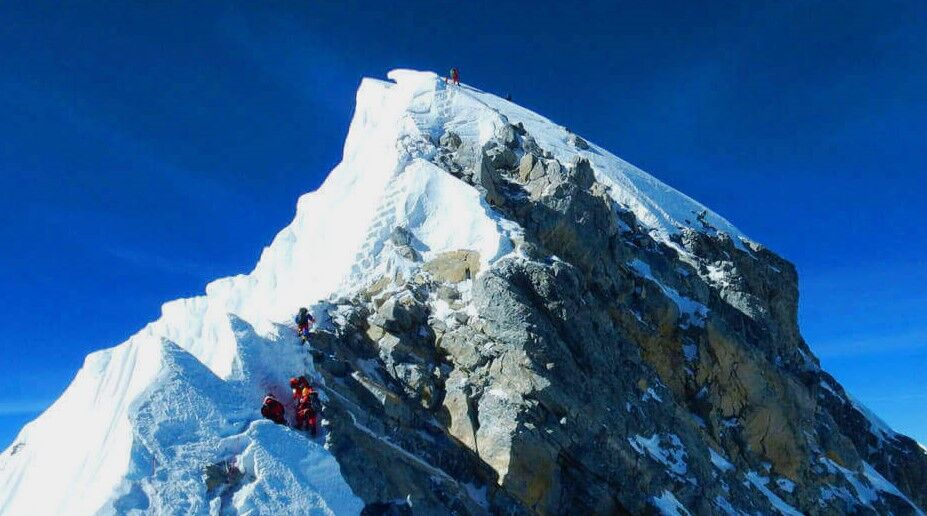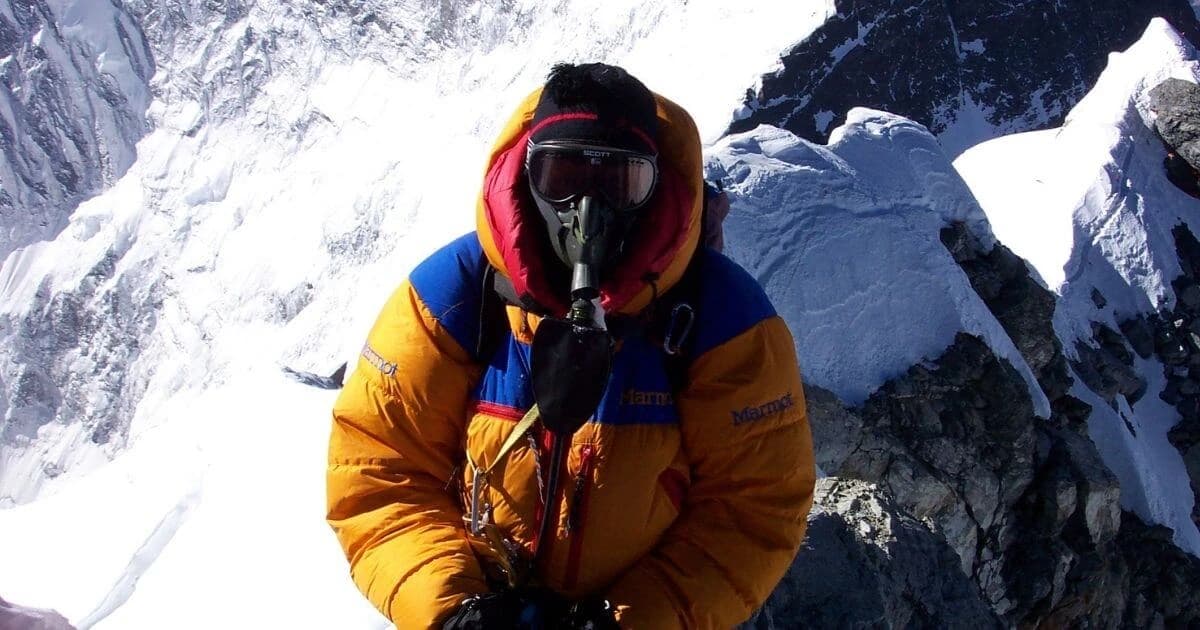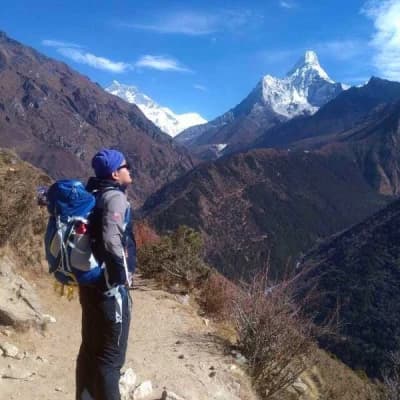Climbing Everest, situated at a height of 8848 m, is an iconic adventure. Sir Edmund Hillary and Tenzing Norgay Sherpa were the first people to reach the top in 1953. Over the past years, many have attempted the journey, and many have succeeded.
At least one climber dies during the journey, yet hikers dream of climbing the top. So, why do people climb Mount Everest? The reasons are complex and deeply personal. Let’s face it: reaching the “top of the world’’ and standing on the summit of Everest is a pinnacle of achievement.
Why Do People Want to Climb Mount Everest?
Everest isn’t just a mountain; it’s an adventurer’s dream to reach the “roof of the world’’. But what makes people risk it all to reach the top?
Hikers are eager to climb Mount Everest through the thin air, icy winds, and treacherous slopes to prove their mettle and push their limits. Standing on the highest point on Earth is a badge of honor.
Not all Everest expeditions are about personal glory. Some teams climb for scientific reasons. They might be studying the effects of high altitude on the human body, the climate patterns of the Himalayas, or the impact of climate change on the mountain’s ecosystem.
For some, climbing Everest becomes a spiritual journey to connect with something larger than themselves.
As long as mountains pierce the sky, the summit of Everest will continue to beckon adventurers, scientists, and dreamers alike.
How to Climb Mount Everest?
Mount Everest is the highest point on Earth, which makes it equally dangerous. Many trekkers often wonder: Can beginners do the Everest Base Camp Trek? Or can a beginner climb Mount Everest?
Though reaching Everest Base Camp can be relatively easier than climbing Everest, reaching the summit is not an easy job; it requires meticulous planning, rigorous training, and courage. You’ll need extensive mountaineering experience, including successful climbs on other high-altitude peaks (above 7,000 meters).
The climb demands exceptional physical condition. A regimented training program focusing on strength, endurance, and cardiovascular health is crucial. Mastering glacier travel, crevasse rescue, ice climbing, and rope skills is essential for navigating Everest’s treacherous terrain.
Remember to choose a reputable guiding company that handles permits, logistics, and camp set-up. Costs can range from $30,000 to $120,000 or more.
Climbing Everest is inherently risky. Altitude sickness, avalanches, and extreme weather conditions are constant threats. It’s vital to be aware of the dangers and have a well-rehearsed emergency plan.

Impact of Weather Conditions on Climbing Mount Everest
Everest isn’t just a climb; it takes courage and stamina to reach the top. The weather at the top of the world is unpredictable. Clear skies can vanish in a blink, replaced by a blizzard with blinding snow and fierce winds. This constant change makes good decision-making crucial for survival.
Thin air is another Everest enemy. The higher you climb, the less oxygen there is, making breathing difficult. Strong winds worsen things, turning simple tasks into struggles and increasing the risk of altitude sickness, a potentially deadly condition.
Temperatures go far below freezing point, causing frostbite and hypothermia. The cold can also cloud your judgment when you need it most. Winter on Everest is especially dangerous, making climbing impossible. High winds trigger avalanches, massive walls of snow that can wipe out climbers and equipment. Climbing Everest is tough, but the weather makes it even more challenging. Be prepared for anything and always respect the mountain’s power.
How Long Can You Stay on Everest?
While some might ask how long you can stay on Everest, the entire expedition can take weeks. The most critical question regarding time on Everest concerns the Death Zone. This refers to the region above 8,000 meters (26,247 feet), where the atmosphere is so thin that it’s nearly impossible for the human body to survive for extended periods.
How Much Does Climb Everest Cost?
Depending on several factors, the cost of an Everest expedition can range from $30,000 to $120,000 or more.
Climbing permits issued by the Nepalese government to reach the Khumbu region or to climb Everest are significant expenses.
Foreigners can pay around $11,000 for permits, and additional fees may apply for climbing during specific seasons. Guiding fees can vary depending on the company’s reputation, services, and team size.
Transportation to base camp, food supplies, camp set-up, and bottled oxygen, as well as gear like high-altitude boots, down clothing, ice axes, crampons, and safety equipment, are necessary. These items can be expensive, especially if you opt for top-of-the-line brands.
Role of Sherpas and Local Guides in Everest Expeditions
Sherpas are an ethnic group native to the Khumbu region of Nepal, where Everest is located. They’re renowned for their exceptional mountaineering skills and ability to thrive at high altitudes.
Sherpas navigate treacherous terrain, fix ropes for ascent and descent, and assist climbers with technical maneuvers. Their experience on Everest is invaluable.
Setting up camps at various altitudes is a crucial task. Sherpas haul equipment and supplies, ensuring climbers have comfortable and safe resting points.
Sherpas are incredibly strong and carry heavy loads, such as tents, food, and oxygen, up the mountain, freeing climbers to focus on their ascent.
Sherpas constantly assess weather conditions and potential hazards, warning climbers of dangers and implementing safety measures.
Sherpas often act as interpreters and cultural liaisons, helping climbers understand local customs and fostering a positive experience.
The role of Sherpas and local guides deserves more recognition. They are the backbone of Everest expeditions, and their expertise, courage, and dedication are essential to reaching the summit.
FAQs on Why Do People Climb Mount Everest
What is beautiful about Mount Everest?
As the highest point on Earth, Everest offers unparalleled views of the Himalayan range. Imagine a world of snow-capped peaks stretching as far as the eye can see. Everest boasts a variety of landscapes, from the treacherous Khumbu Icefall to the icy slopes leading to the summit. This dramatic change in scenery adds to the awe-inspiring experience.
How many people have successfully climbed Everest?
As of November 2022, over 310 people have reached Mount Everest's summit. This number continues to grow yearly, but it’s important to remember that many attempts fail or even die.
Why is climbing necessary?
Climbers tackle Everest for various reasons: the ultimate challenge, personal glory, scientific study, or a spiritual connection with nature.
Do people climb Everest with oxygen?
Around 95% of climbers who reach the summit of Everest use bottled oxygen. The atmosphere at high altitudes is thin, making it difficult for the body to absorb enough oxygen. Supplemental oxygen helps climbers function and reduces the risk of altitude sickness, which can be fatal.
Why do people climb Mount Everest?
People climb Mount Everest for the ultimate challenge: to conquer the world’s highest peak and test their limits in an unforgiving environment.
Is there an age limit for climbing Everest?
There is no official age limit for climbing Everest. However, the extreme physical demands and harsh conditions make it a hazardous undertaking for anyone. Most climbers who reach the summit are in their 30s or 40s at their peak physical condition.


.webp&w=1200&q=75&dpl=dpl_2PwU5ZDv8uoJ3KrzEVbz8N547HgX)
.webp&w=1200&q=75&dpl=dpl_2PwU5ZDv8uoJ3KrzEVbz8N547HgX)
.webp&w=1200&q=75&dpl=dpl_2PwU5ZDv8uoJ3KrzEVbz8N547HgX)